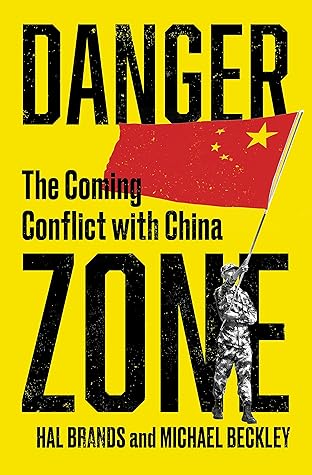More on this book
Community
Kindle Notes & Highlights
by
Hal Brands
Read between
September 24 - October 15, 2022
But Xi’s speeches, government white papers, and other sources leave little doubt that Beijing is striving for a world-class military that can project power globally and for Chinese dominance of the high-tech industries that generate economic and military power.19 In a Sino-centric world, America’s global network of alliances would be weakened and neutralized; Beijing would exercise global leadership through its own strategic relationships and international institutions that it can bend to its will.
Chinese grand strategy thus encompasses far more than the narrowly conceived defense of the country and its ruling regime. Those goals are tightly linked to the pursuit
of an epochal change in the regional and global rules of the road—the sort that occurs when one hegemon falls and another arises. “Empires have no interest in operating within an international system,” writes Henry Kissinger. “They aspire to be the international system.”24 That’s the ultimate ambition of Chinese statecraft today.
Don’t get us wrong: We’re not saying that China is on the brink of economic collapse or that it lacks the money or muscle to pose major problems for the world. But we are saying that the conventional wisdom about China’s ascendance is flawed. Where others see rapid Chinese growth, we see massive debt and Soviet-level inefficiency. Where others see gleaming infrastructure, we see ghost cities and bridges to nowhere. Where others see the world’s largest population, we see a looming demographic catastrophe. Where others see an ocean of Chinese exports, we see vulnerable supply lines and a dearth
...more
The combination of geography and democracy made America a fairly benign superpower, which gave other countries an interest in supporting its hegemony.
most of these industries, there will be only one set of global standards, and the country that sets them will likely rule the market because its products will already meet the required specifications. The Chinese recognize this advantage and have a saying: third-tier companies make products, second-tier companies make technology, top-tier companies set standards.
China fights, not when it is rising, but when its security is deteriorating and its bargaining strength is declining.66 In other words, the CCP typically uses force to exploit a closing window of opportunity or avoid an opening window of vulnerability.
But between now and the early 2030s—when U.S. and Taiwanese defense reforms will begin to make a major impact—China has its chance.
Formally known as the European Recovery Program, the Marshall Plan was meant to combat the desperation that was softening up the continent for Communist takeovers, and then to jump-start the economic recovery required for lasting stability and strength.
prioritize ruthlessly. Thinking clearly about where to bet big and where to conserve resources is always important; it can be a matter of life and death when the level of threat is high and the margin for error is low.
Truman explained.47 The aim of a danger-zone strategy was to strengthen the American position by taking necessary risks—not to bring on the apocalypse by taking foolish ones.
The United States avoided a hot end to the Cold War because it reduced the desperation a declining Soviet Union felt, while also destroying any hope that a gamble for resurrection might succeed.
Prioritize ruthlessly; thwart near-term breakthroughs that can have devastating long-term effects. Be strategically deliberate and tactically agile; don’t make the perfect the enemy of the good. Firm up the defense by playing some offense; take prudent risks but not unduly provocative ones. Think of danger-zone strategy as something that helps you win in the future by avoiding disaster in the here and now.
The United States doesn’t need to counter every Chinese infrastructure project around the world; doing so would be financially ruinous and strategically exhausting. It does need to prevent China from monopolizing what the Pentagon calls “critical” technologies, meaning those with the potential to produce massive economic and military gains, and using that dominance to ensnare nations around the globe.6
History shows that whoever dominates the critical technologies of an era dominates that era.
best way of doing this is to forge an informal economic alliance that excludes and outcompetes China.
This means America must pursue a double-containment strategy that deals with threats from China and Russia simultaneously. In Europe, task one is to beef up defenses on NATO’s Eastern flank. European nations have promised to invest more heavily in defense, with Germany—long the
continent’s leading free rider—now promising to show the way.63 But those efforts won’t bear fruit for years, and they won’t
“Fear makes easy the task of diplomats,” John Foster Dulles liked to say—it engendered the democratic cohesion the free world required to survive.69 Ironically, Putin may have done the United States a favor: Autocratic aggression on one side of the world could provide the urgency America needs to get ready for trouble on the other.
What will happen to China as this new cold war unfolds? There’s a lot we don’t know about China’s future, but there are three extremely important things we do know. Collectively, they imply that China will be economically sluggish, internationally hated, and politically unstable by the 2030s.


